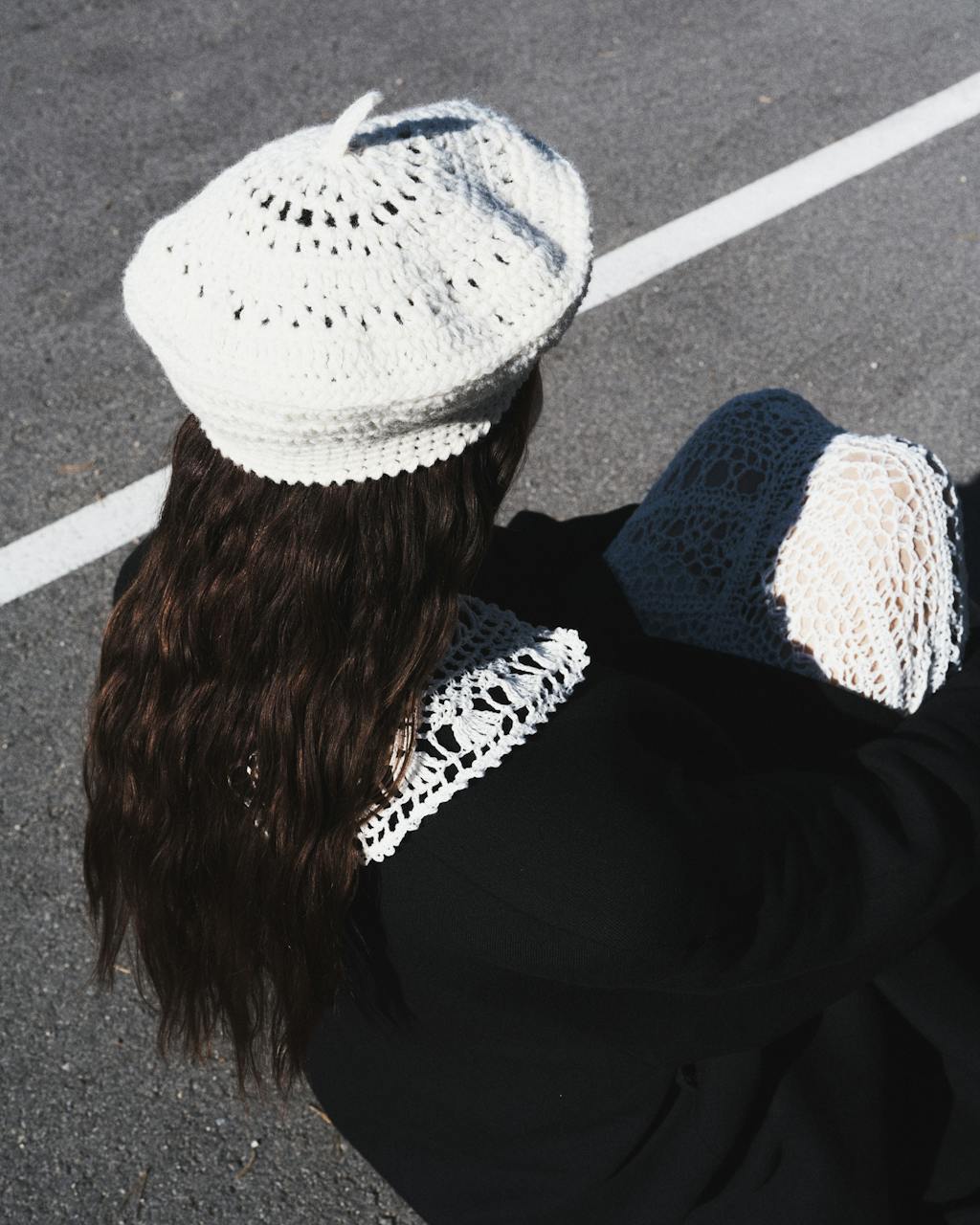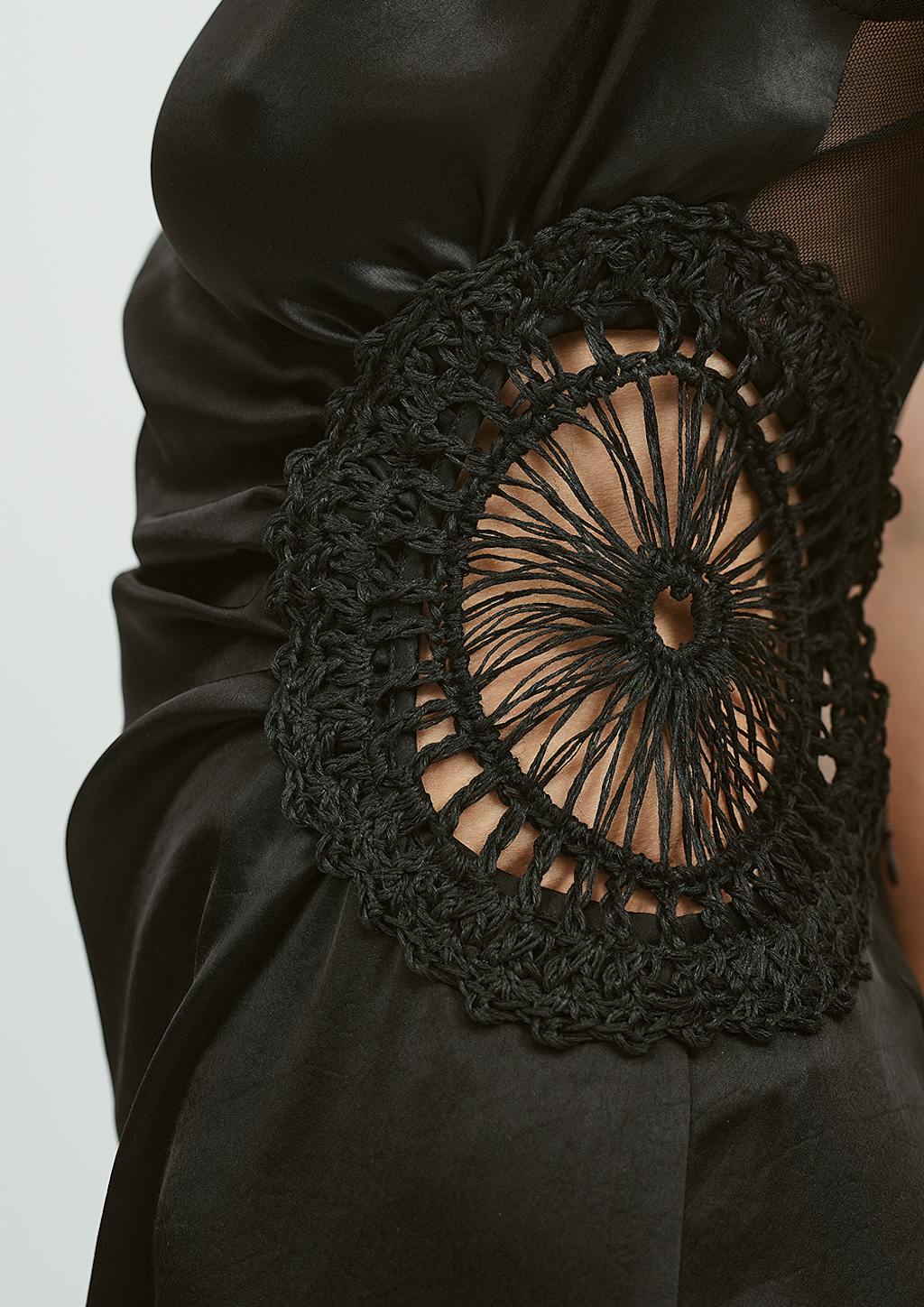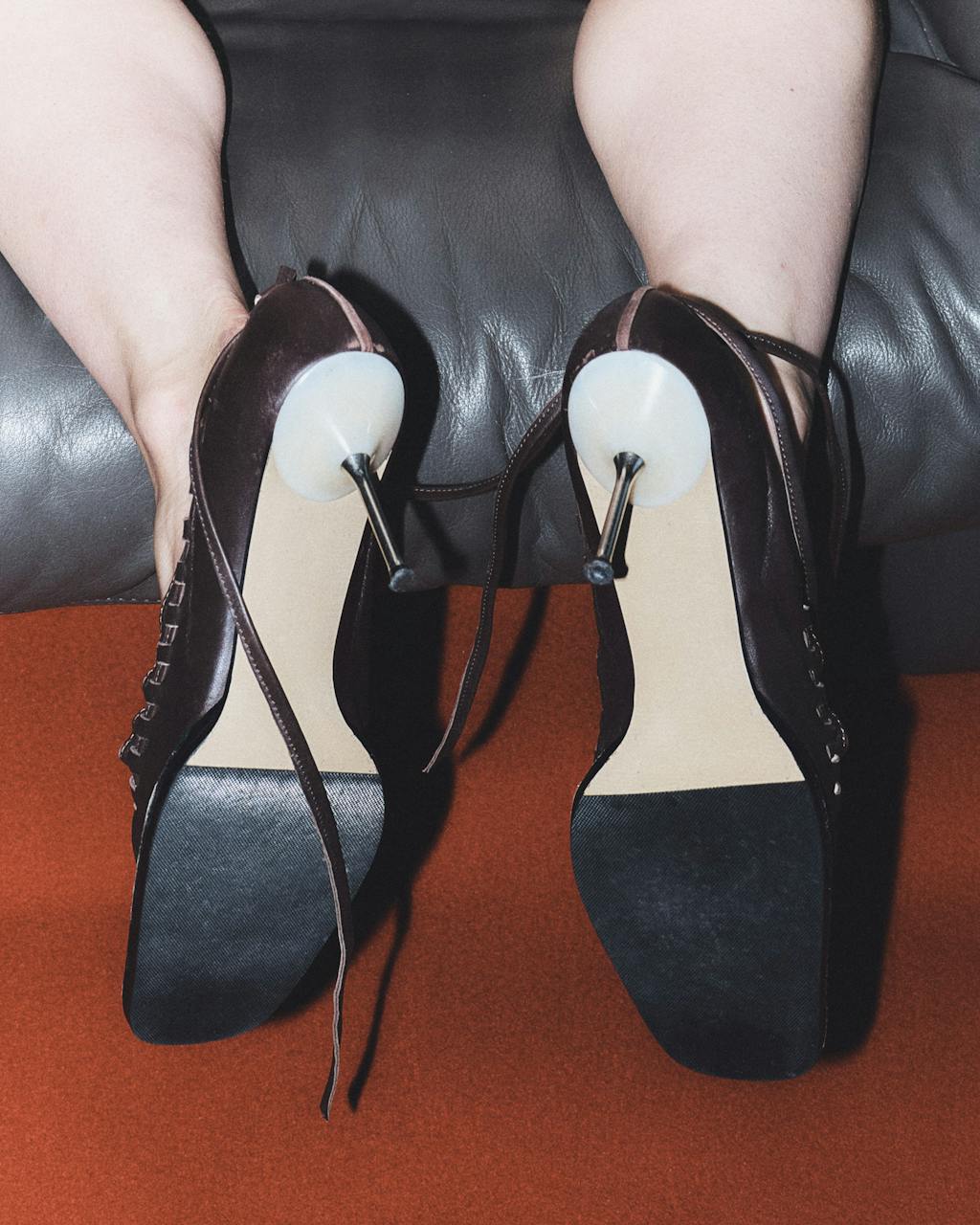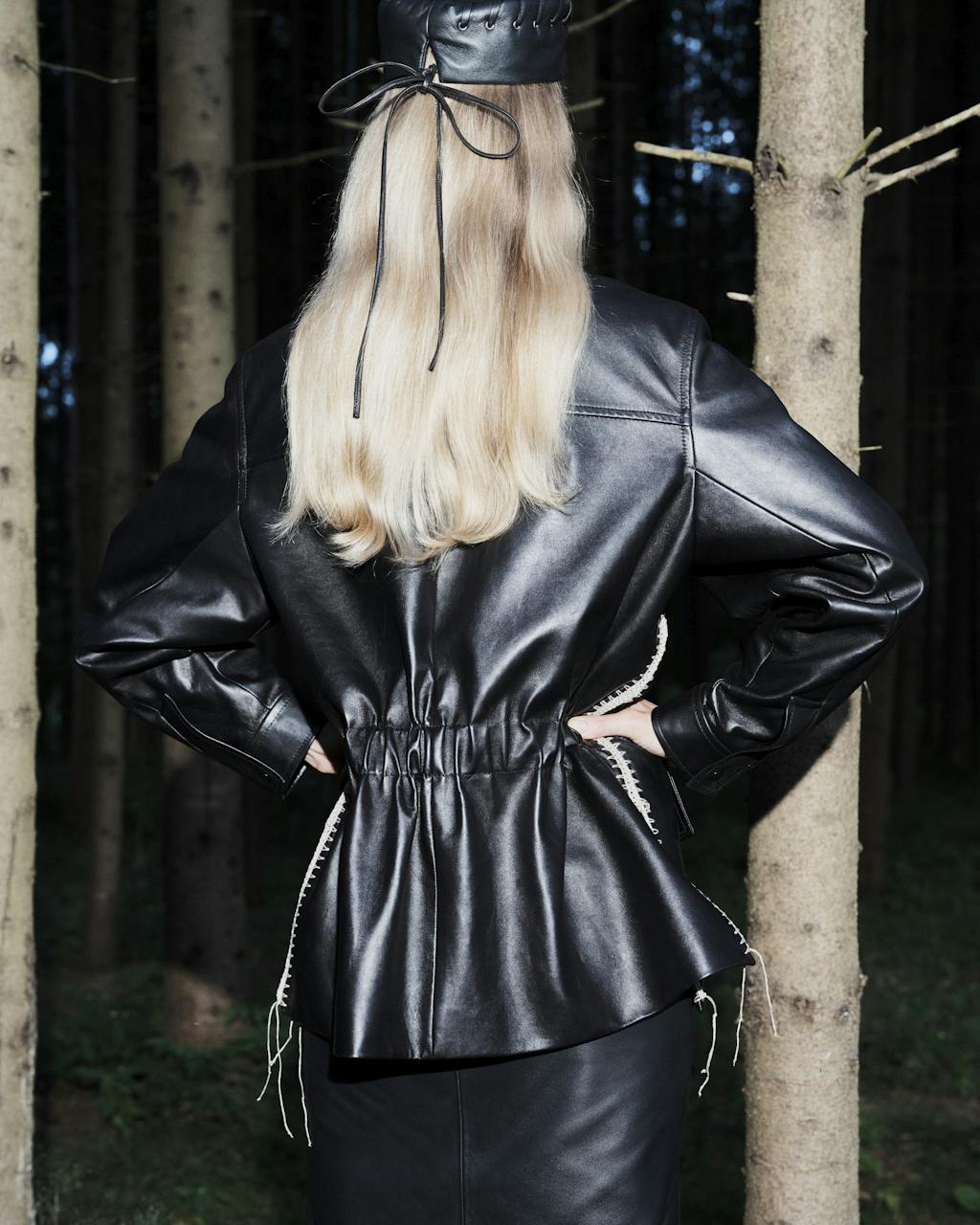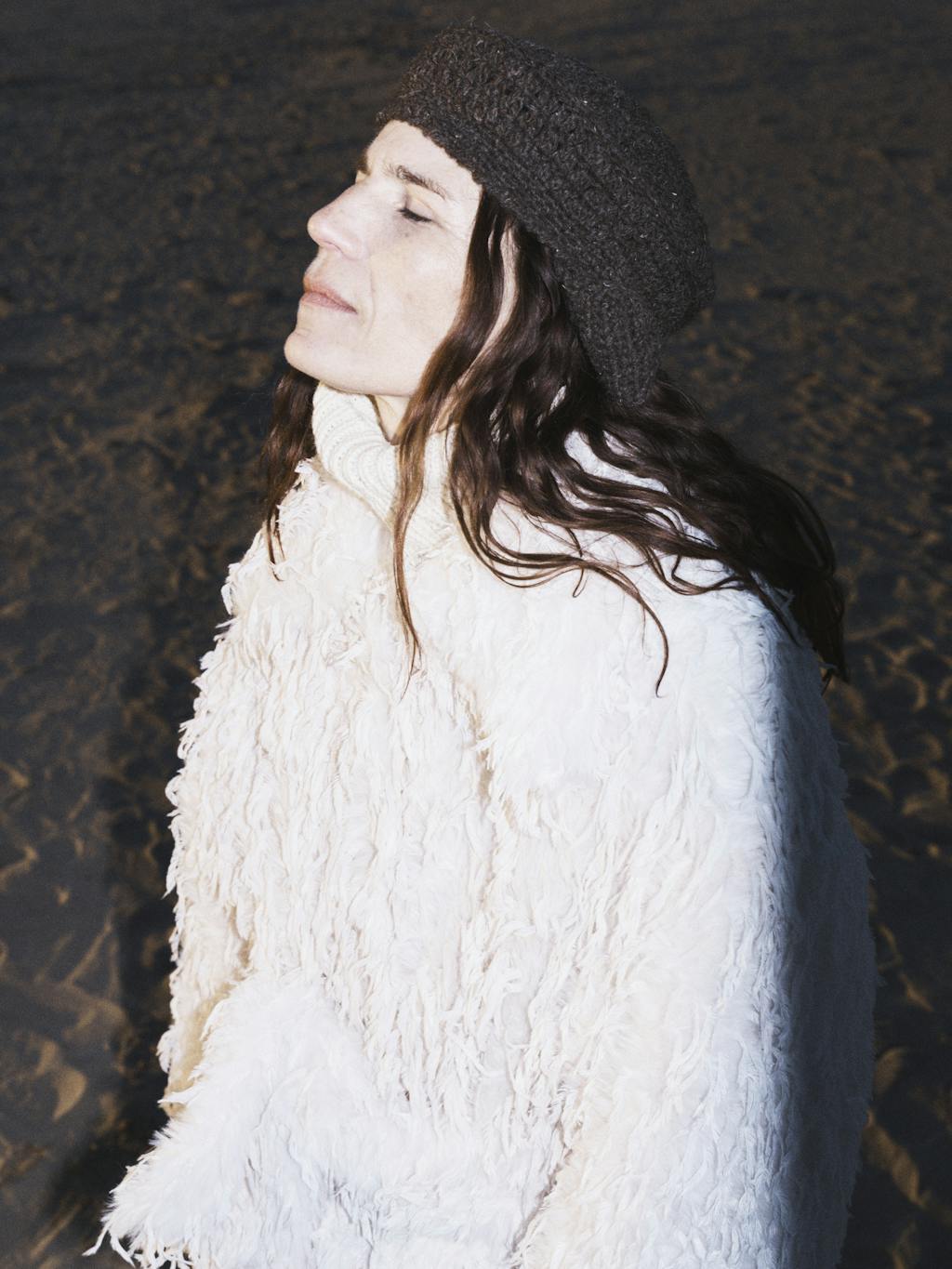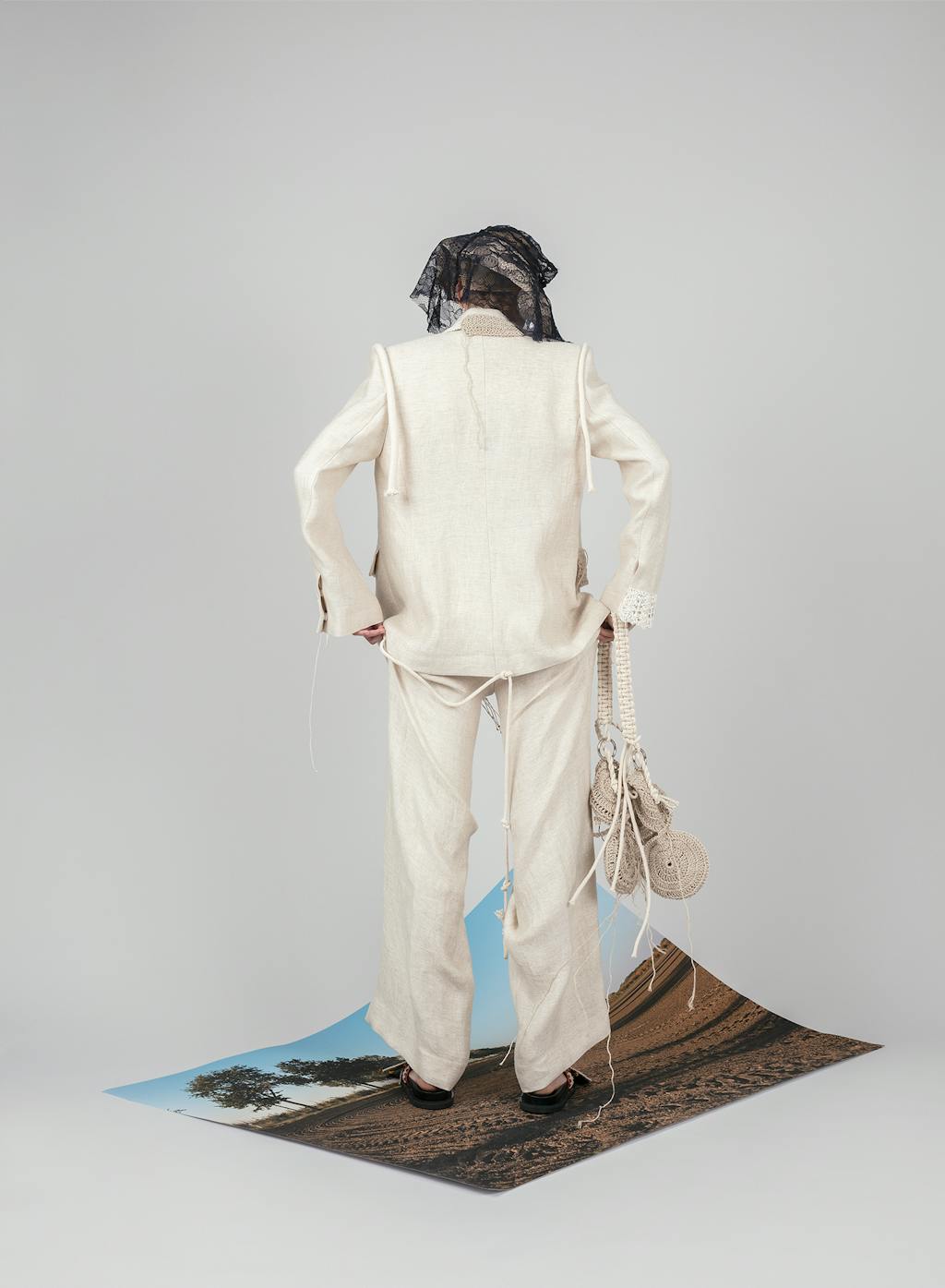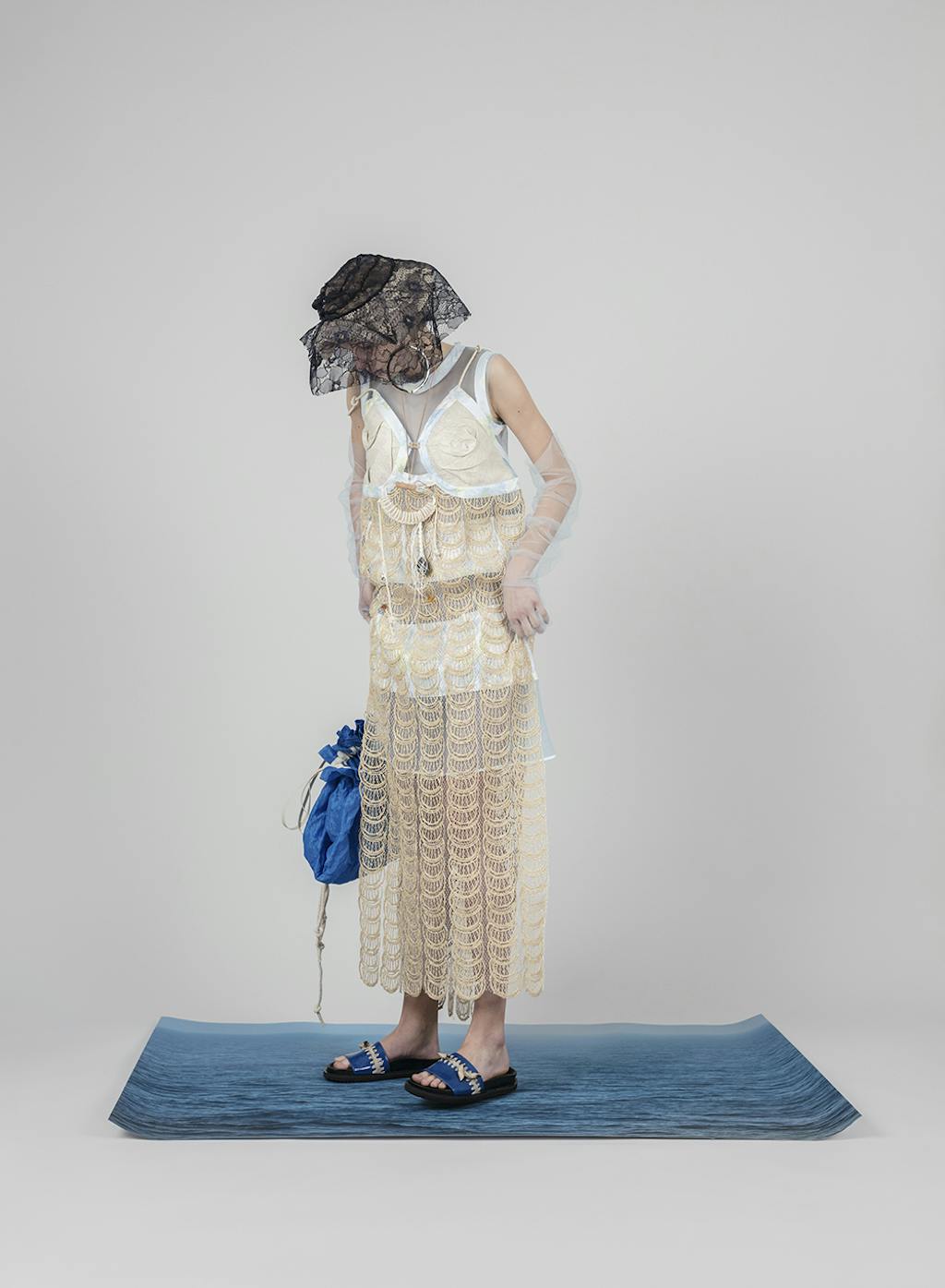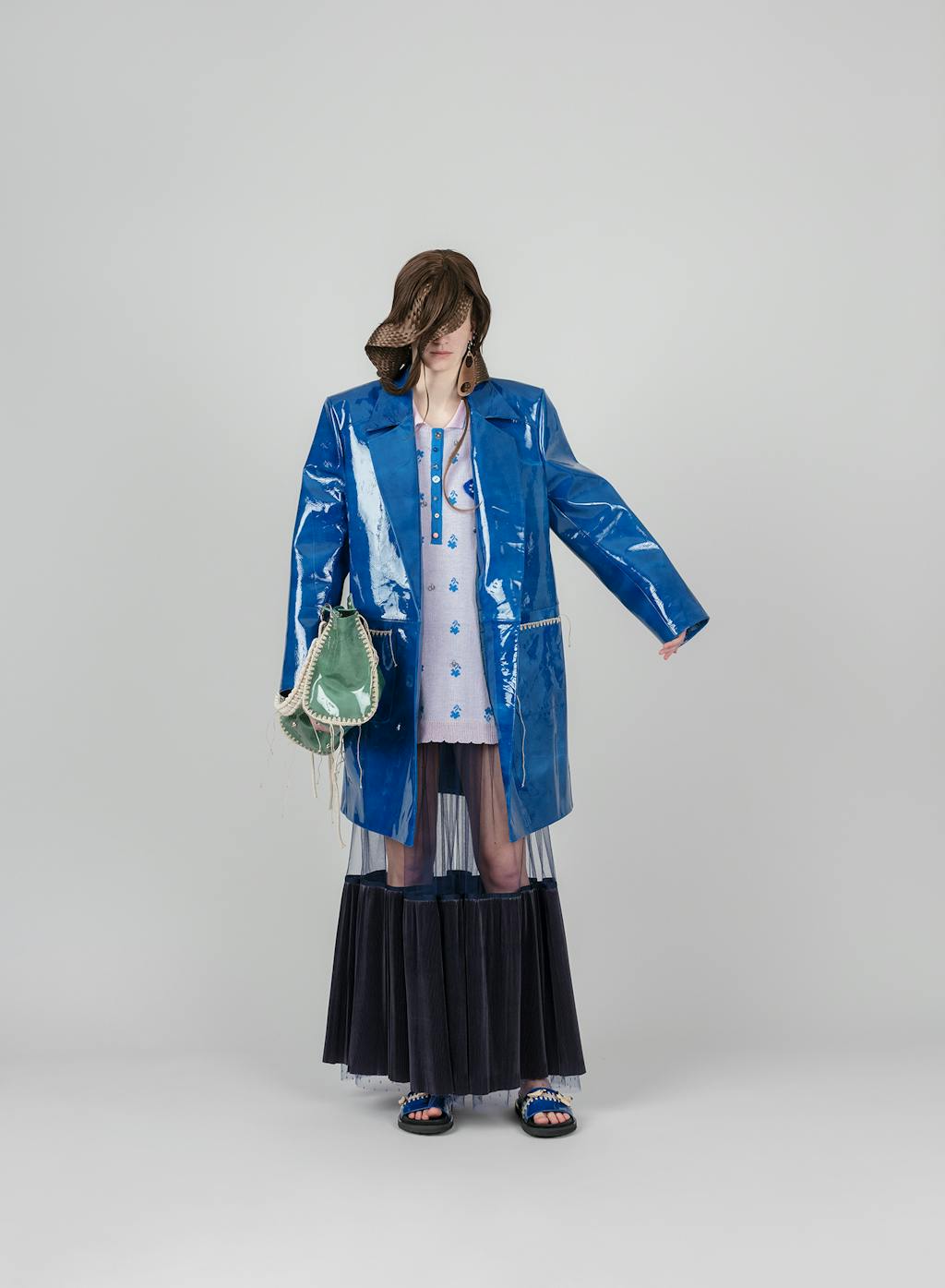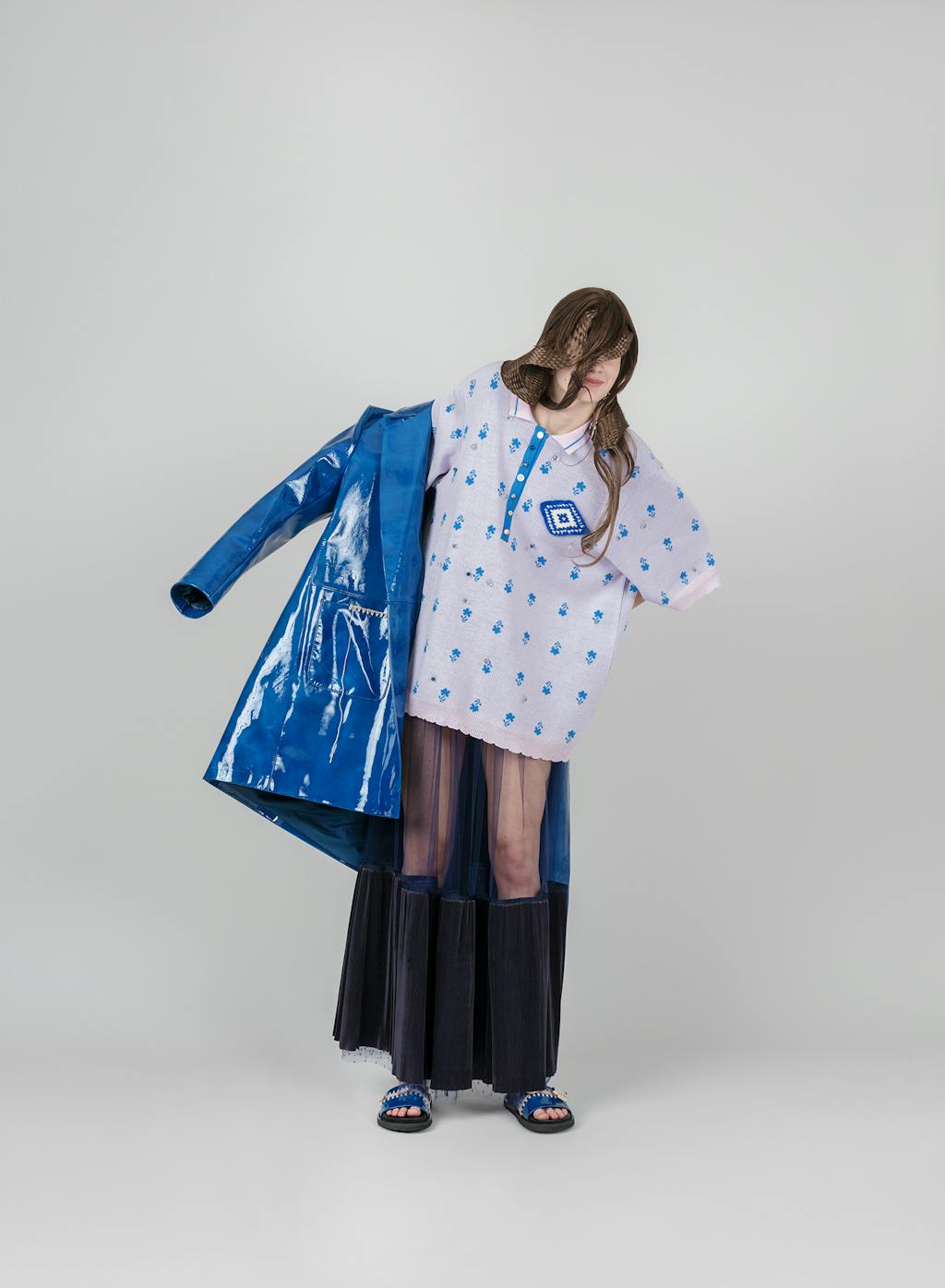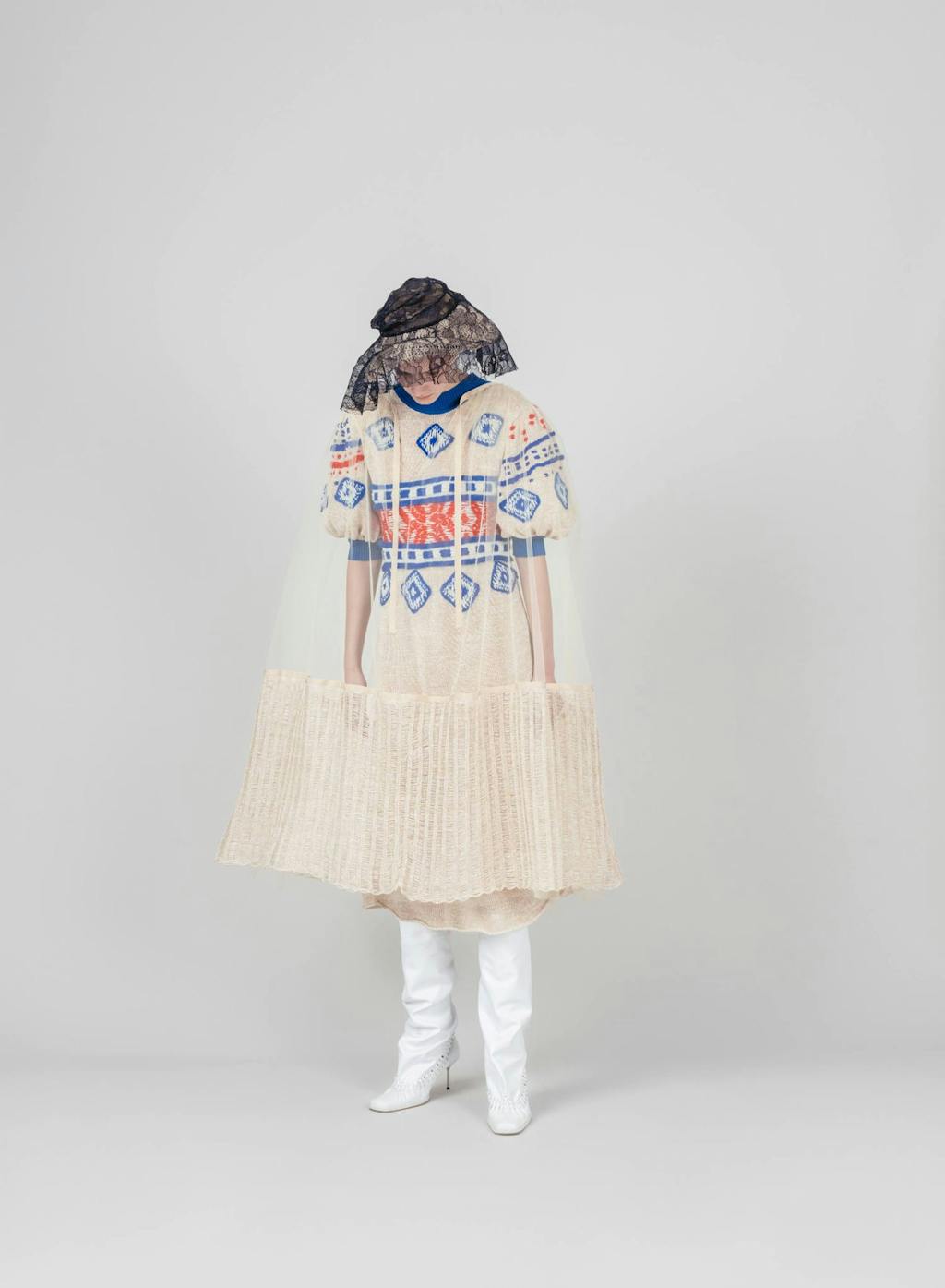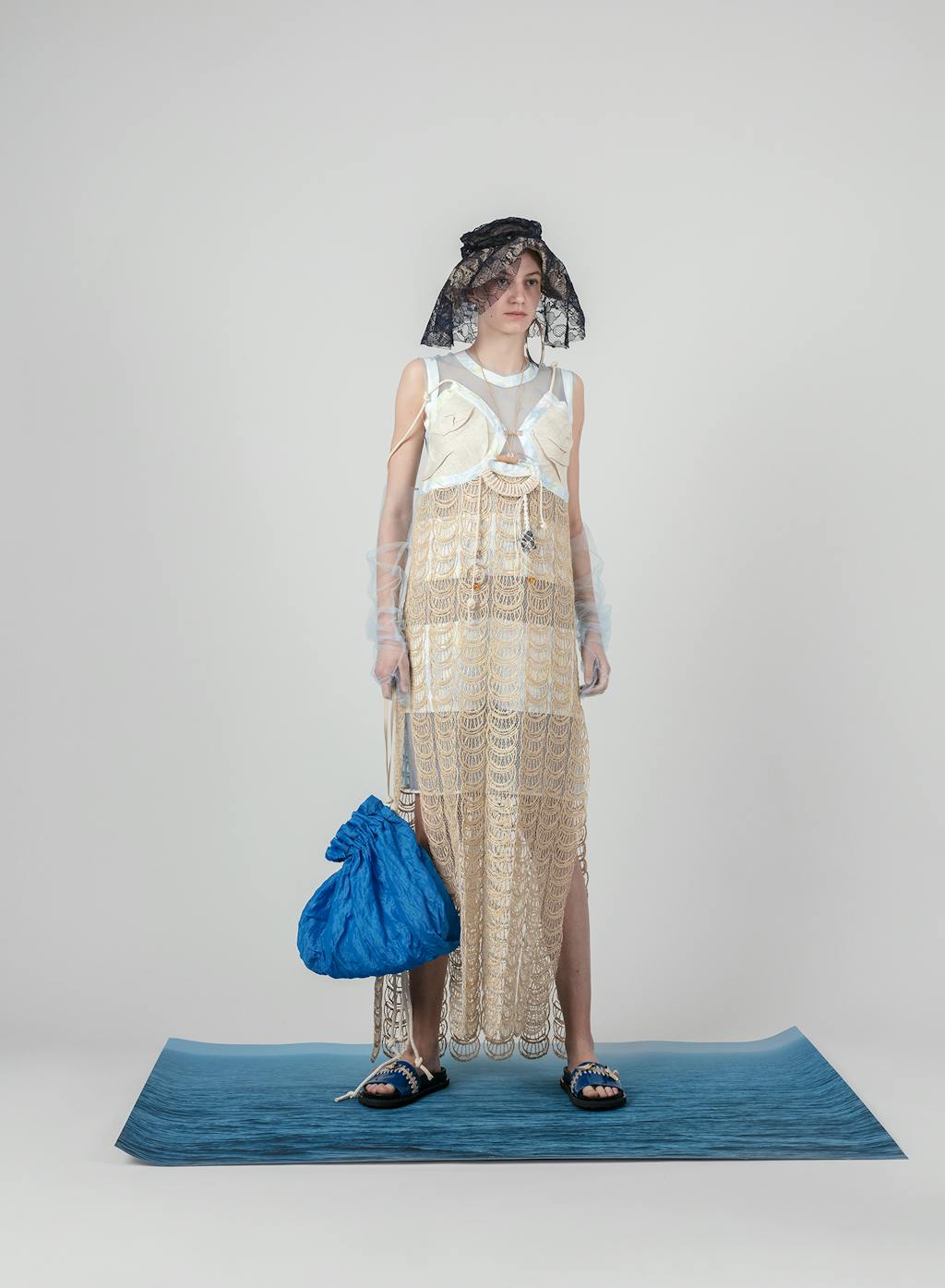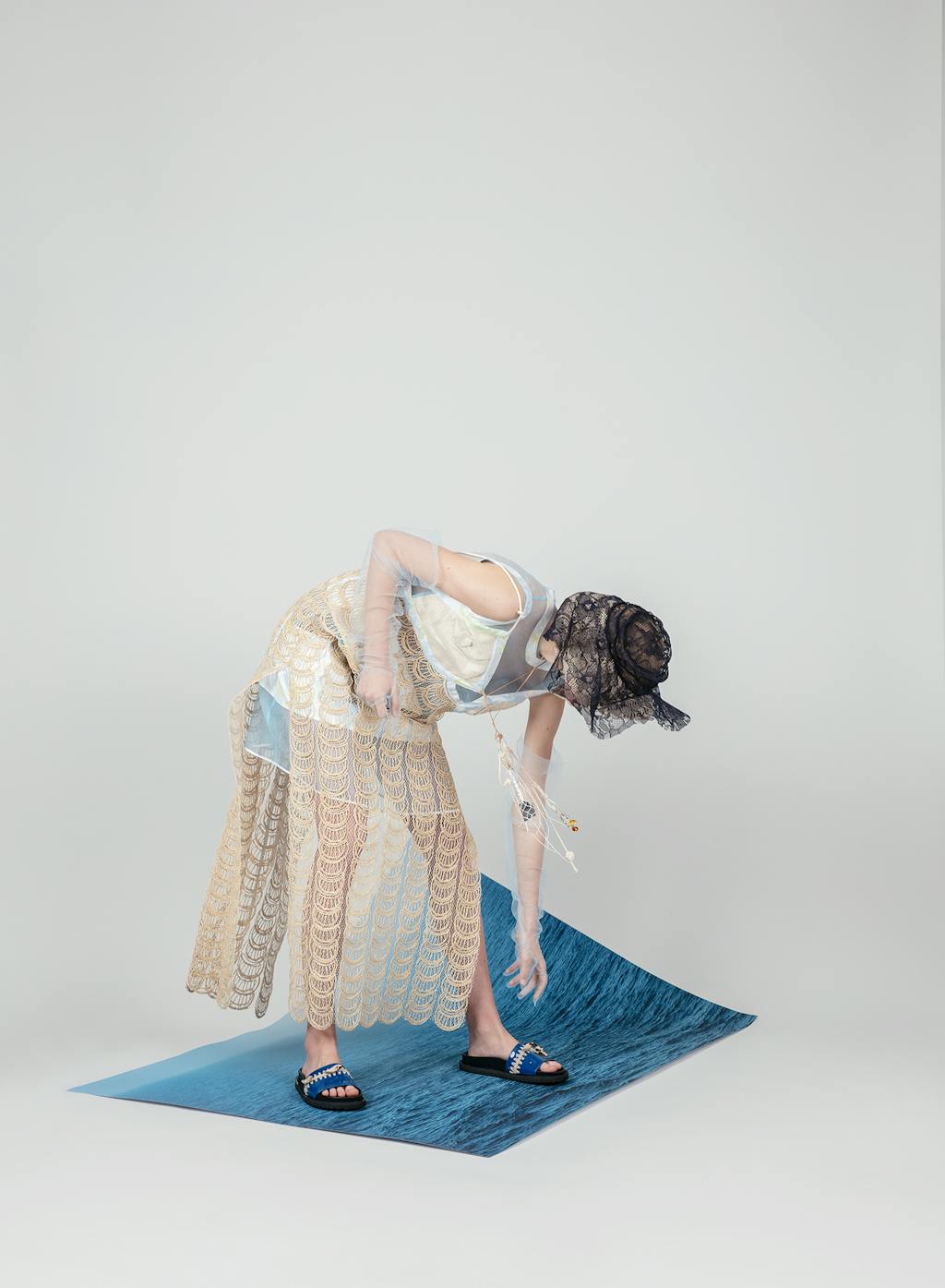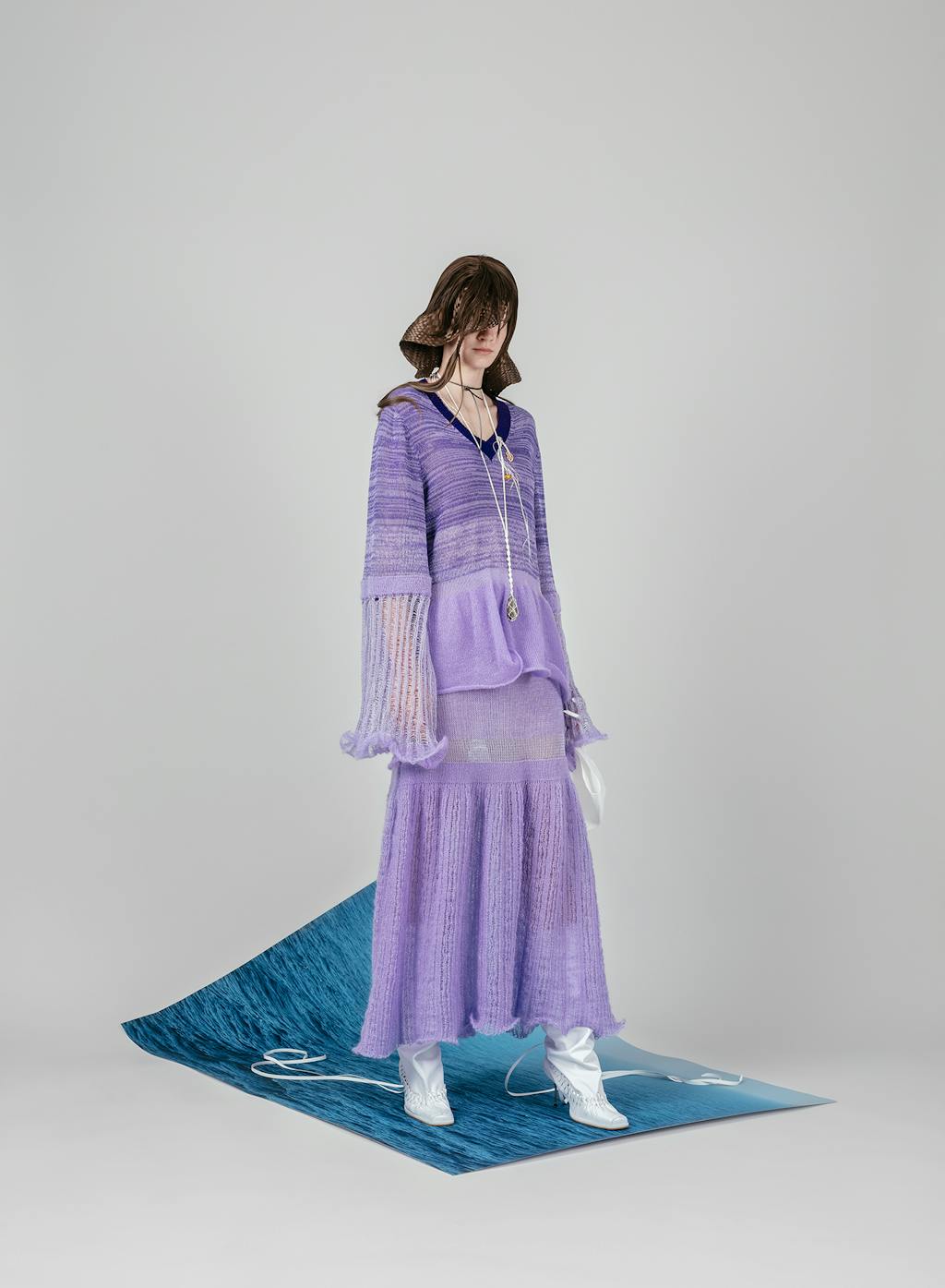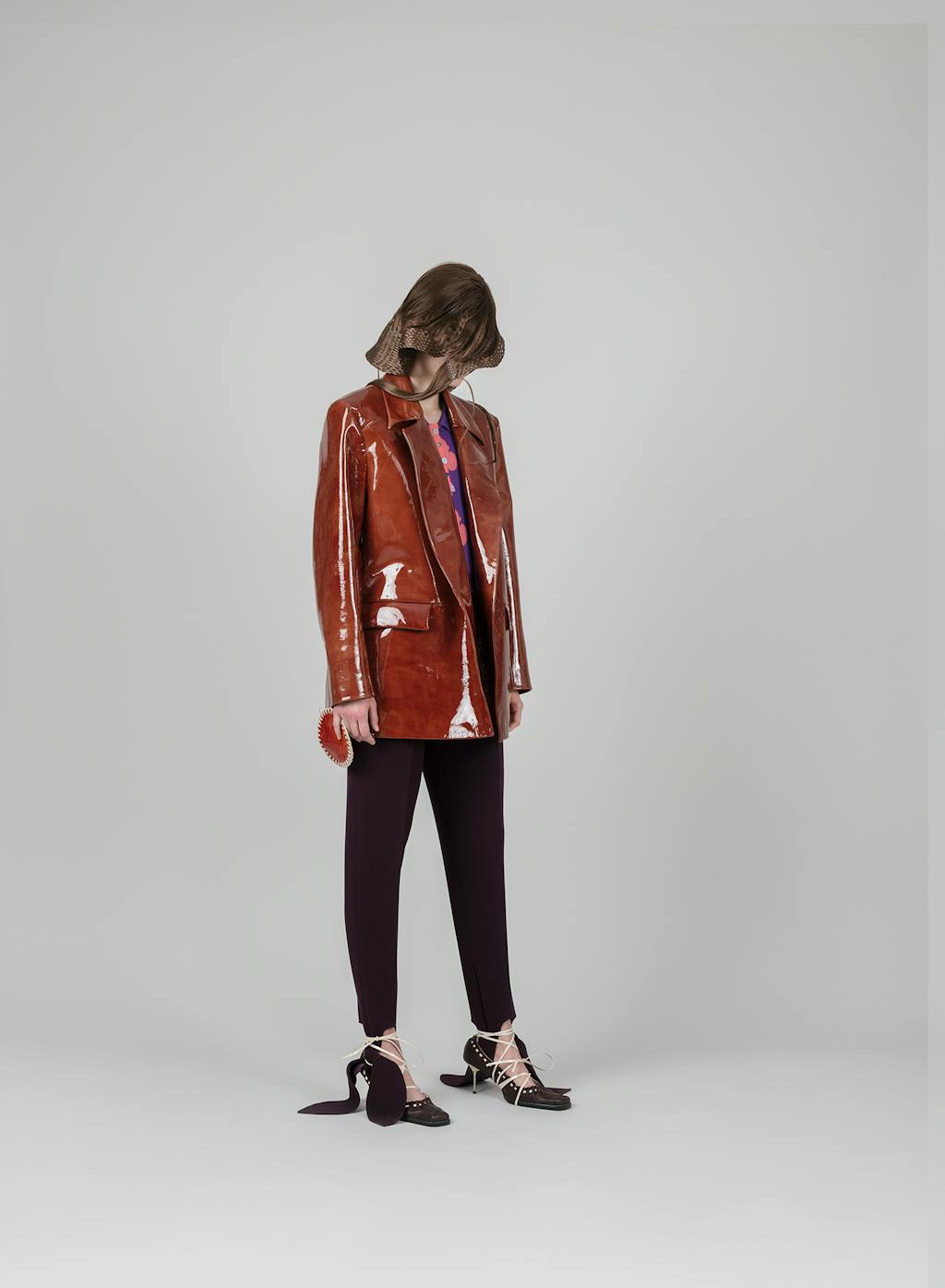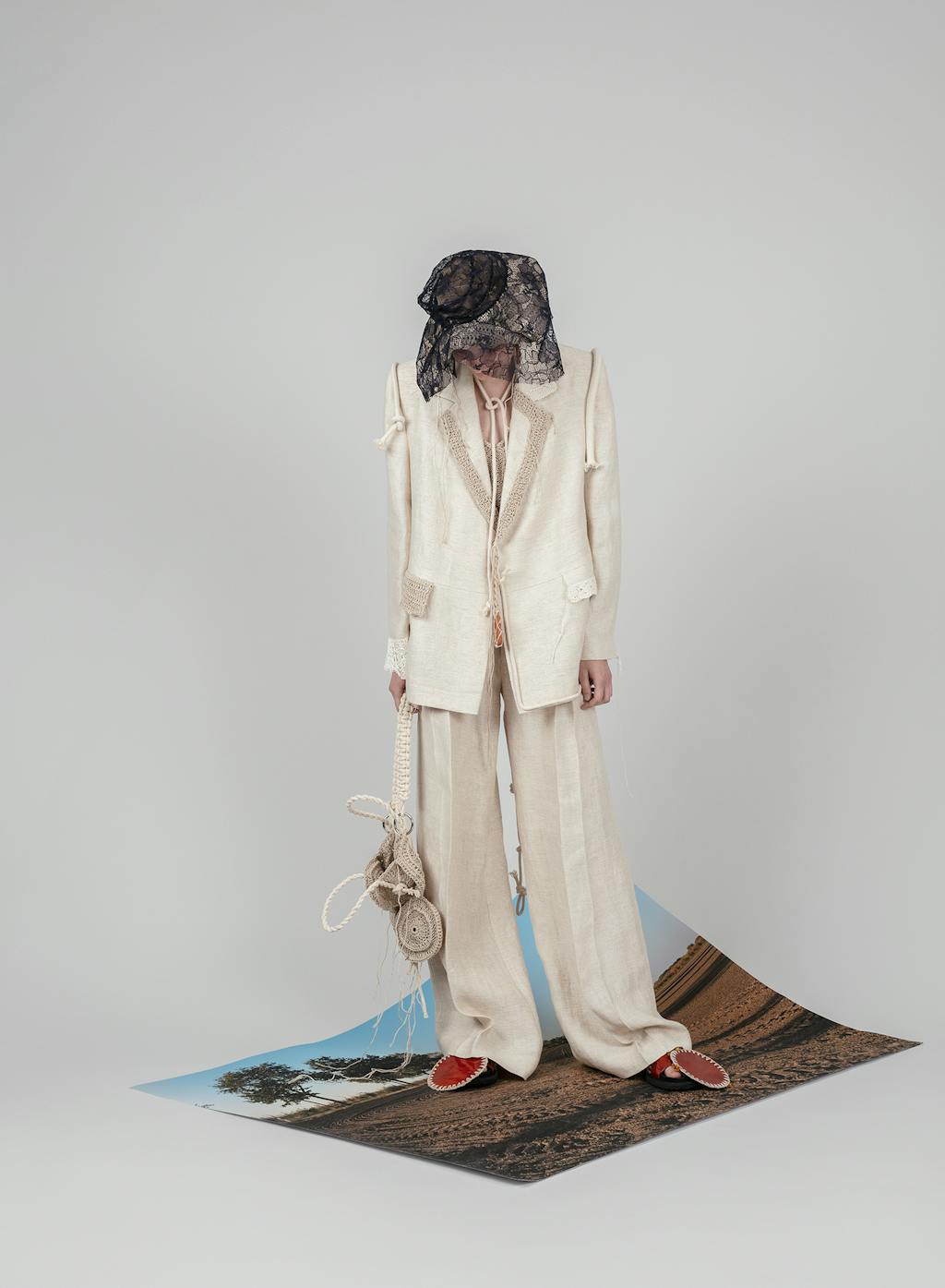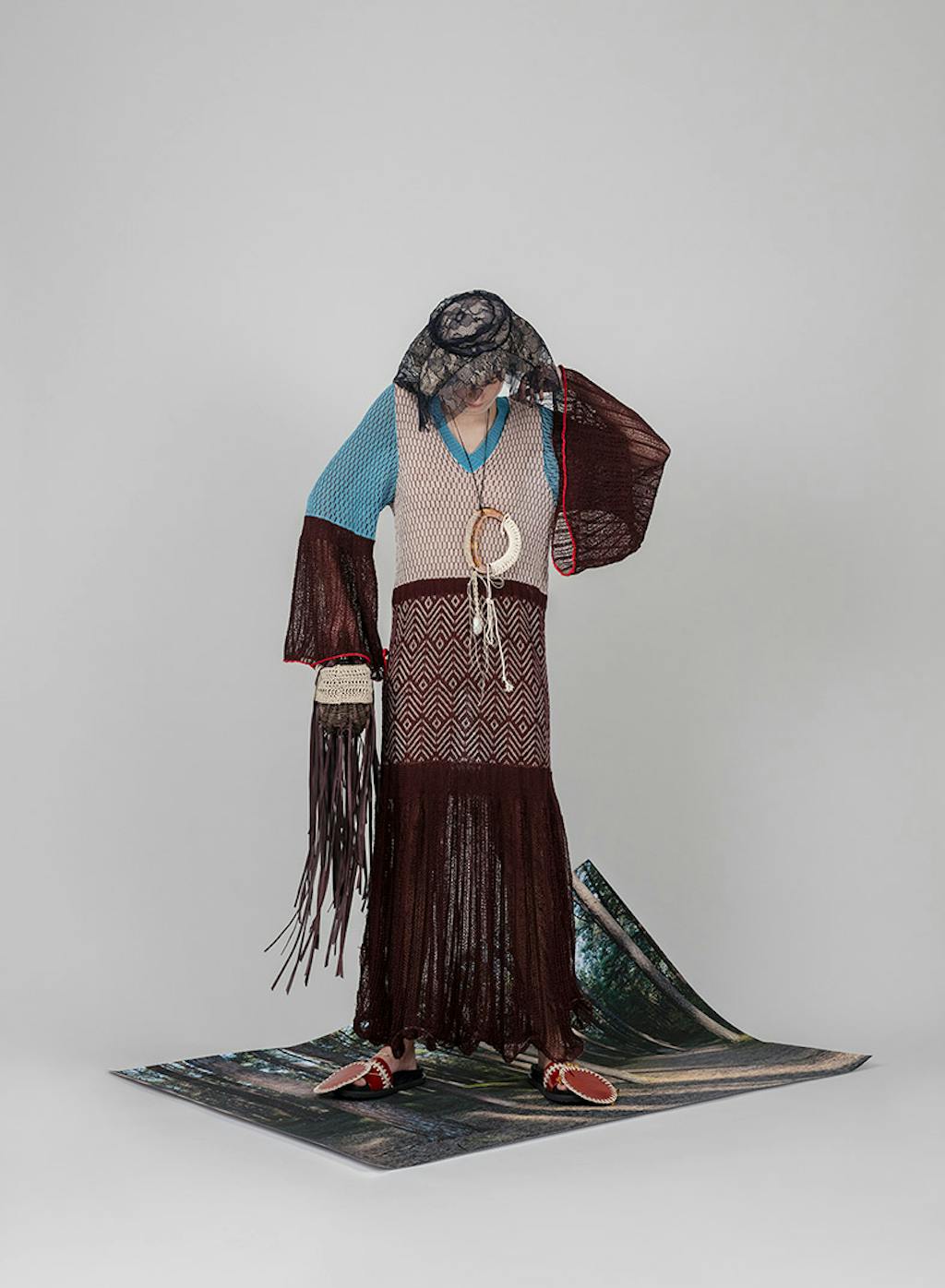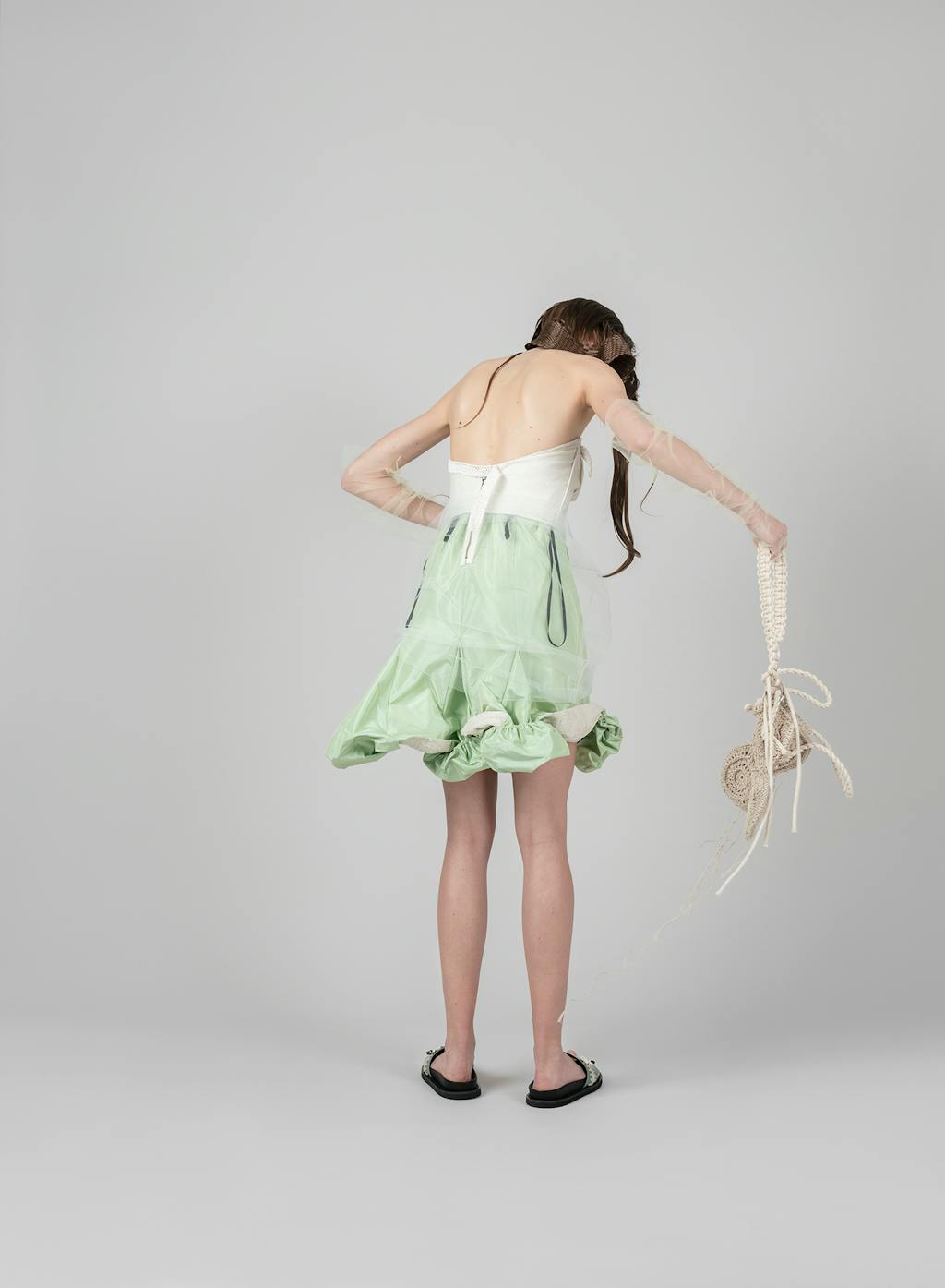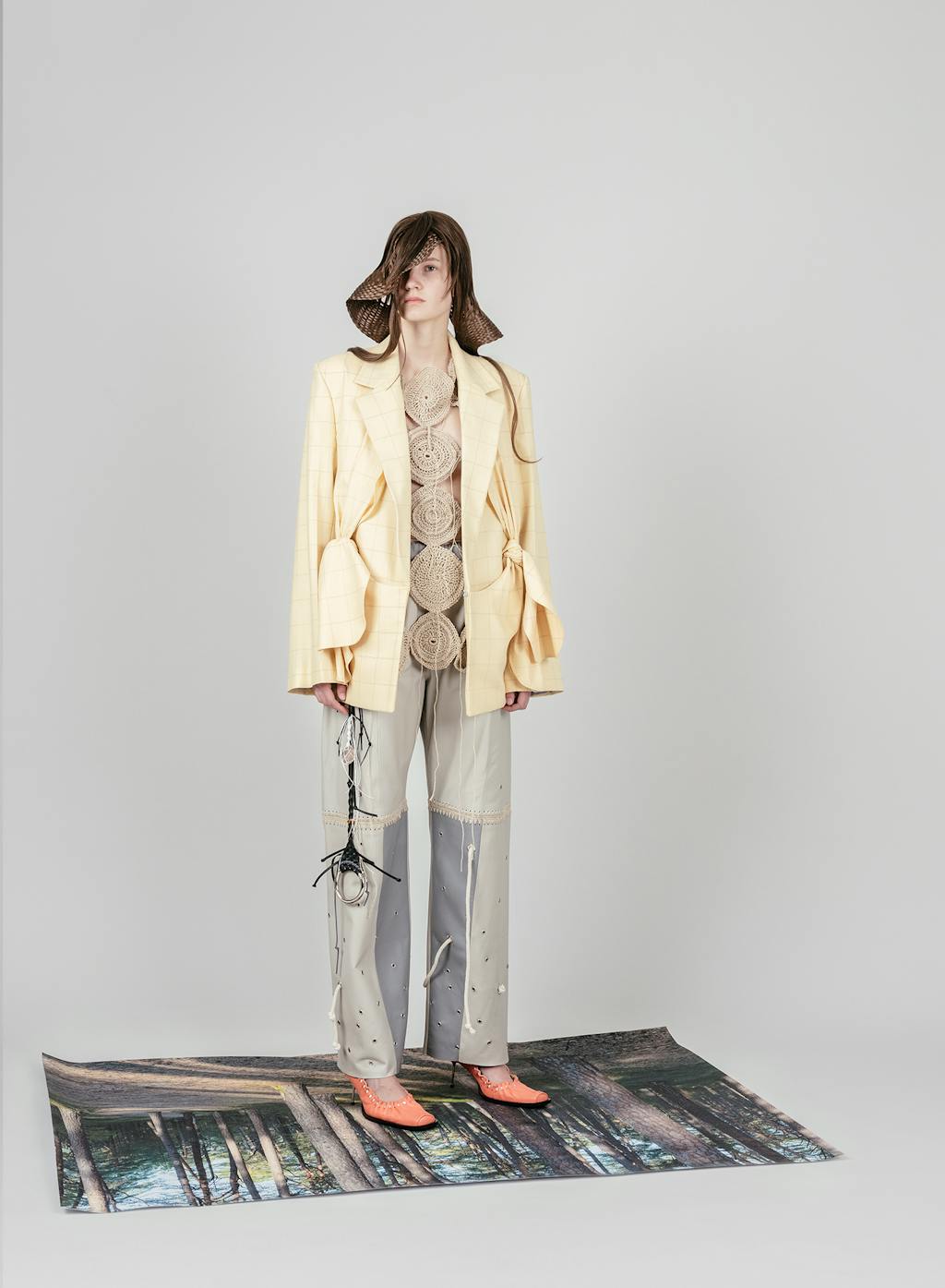Collection info
Garš Laiks or Vaguely Latvian
Titled +371, this collection arrives from a translation and re-purposing of a culture. From meeting with relations of various stereotypes and clichés, the past and imaginary to reveal the creator’s—Sabīne Skarule’s—own intelligently sentimental ties with a particular place and the memories attached to it.
It unravels and re-groups various cultural codes and tropes, whilst simultaneously being openly self-referential and dealing with limitations and obstacles (including the concepts of silhouette, cut, or functionality) through playfulness, but equally with caution and responsibility. +371 mixes choice with chance, and weaves a plot together to create a distinct look on the body.
Occupying the mental realm that dates somewhere between the dissolution of The Soviet Union and the renewal of the Republic of Latvia in 1991, +371 announces itself as a site where the aesthetic of the New East meets with those of the New North/Nordic and are further populated with other references pulled out from moments of the designer’s creative wanderings.
Not unlike the vertigo of the 90’s in Latvia, when uncertainty and overabundance of nearly everything prevailed and all was new and had to be learned and consumed, today’s cultural time-space in the West also seems to be flickering in permanent chaos. No maps, no road signs, no navigational tools are in place. Therefore, you can’t ask for a better moment to attempt the opposite—slow down, listen, and day-dream.
What in some cases can be—if not dangerously, then certainly unproductively—implemented with the pure killing of the time by doing uncompromisingly-nothing; another possibility is to fill this killed time with an activity of a more generative nature.
In such a way, +371 arrives in the form of a crumbled and syntactically broken-up visual and patterned language that is once again pieced together. These loose, body non-fitting, and slightly old-ish looks are reinforced with elements sewn or accessories made from traditional crafts techniques such as knitting and crocheting. Through revisiting the craft techniques experienced by the designer in her childhood, +371 communicates conditions and experiences, relations and feelings of the making. It touches upon the relationship between the designer and a craftswoman, between the designer and a wearer, and those between the wearer and their ‘audience’.
Based on the regionally characteristic manner of thinking and expressing one’s thoughts and beliefs in a way that involves linguistic ‘decorations’ such as metaphors, euphemisms, neologisms and puns, this post-folk meets post-romantic collection delivers a specific language and set of concerns where the applied techniques and referenced things get switched around and end up taking a different form, function and eventually—meaning.
And yet—although the treatment and styling of the place, time and culture this collection originates from is a result of largely personal and intimate experiences (childhood in the rural situation, experience of the feeling of isolation that is further challenged by temporary work commitments in New York...), this imagination is not solely individual. It thrives on the social symbols and allegories on what it means to be a part of something that has been framed as a “national imaginary.”
While +371 appears during a resurgence of patriotism of various kinds—think of the naively pastiche treatment of the National throughout Centennial celebration programs in the Baltics in 2018—to a far-right nationalism—with xenophobic phrases, symbols and actions haunting Poland and Germany—widespread across present-day Europe and the world at large—this collection, aesthetically layered and subtly conceived, posits a potential for a vitality and a generosity.
+371 is a correspondence between the private and the (a)political that is not commissioned. In a good fashion, +371 is vaguely Latvian.
ZANE ONCKULE
curator
Upstate New York, May 2019

